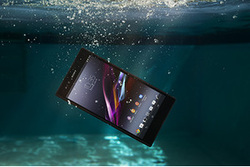 Japanese Electronics giants Sony have launched a waterproof Android Smartphone – Xperia Z Ultra – with a 6.4in screen (16.3cm), describing it as the ‘slimmest large-screened handset on the market’. The new device is 6.5mm thick – slightly deeper than the thinnest device on the market, Ascend P6, launched recently by the Chinese telecom-network equipment giants Huawei. Like original Xperia Z, which was unveiled in January, the enhanced version is also equipped with stunning features, one of which is that in addition to an optional stylus, it also accepts notes or sketches written using metal-tipped pen or a standard pencil. Xperia Z ultra comes up with a 1080p resolution screen with in-built software to upgrade lower definition photos and videos. It has an 8 megapixel rear camera, and a powerful battery that offers up to 11 hours talk time. The 16 GB of internal storage of the device can be expanded to 64GB with the support of microSD cards. The Ultra follow-up is highly water-resistant and can be submerged to a deeper limit – 1.5m (4.9ft) in freshwater for up to 30 minutes. Xperia Z Ultra will be available for sale in Singapore and China sometime in July-August and in Europe from September. Sony said it aspires to challenge Samsung’s supremacy of the jumbo-sized handset sector with its new flagship device. The firm is not alone in seeking to grind down the lead of Korean Electronics giant. Several other players in the market have also jumped into the competition with their large-screened handsets. These devices include Huawei’s 6.1inch Ascend Mode, Acer’s 5.7inch Liquid S1; ZTE’s 5.7inch Grand Memo; Asus’ 6inch FonePad Note and Lenovo’s 5.5inch Ideaphone K900. For more information on the world of mobile, head to Mobile World Congress 2014 in Barcelona, taking place from 24-27 February, 2014. Contact EAS for the best in quality accommodation, marketing and event management in Barcelona.
 Mobile messaging application WhatsApp has announced a new record for inbound and outbound messages sent in a single day. The company tweeted that it processed 27 billion messages –10 billion inbound and 17 billion outbound messages– in a 24-hour period. It, however, didn’t reveal when exactly it received the new record. WhatApp had handled 18 billion messages – seven billion inbound and 11 billion outbound messages– in its previous record during last year’s New Year Evening. The massive disparity between inbound and outbound numbers is down to the addition of group messages in Whatapp, which means if someone sends one inbound message in a group it could result in several outbound messages to the other group members. WhatApp supports Android, Asha, Windows Phone, Symbian and BlackBerry platforms. Unlike its rivals, the company charges users $0.99 per year for unlimited use. Jan Koum, the WhatApp CEO, recently announced that the company’s monthly active users have been propelled to 200 million, more than Twitter and several other social networking websites. However the service does face stiff competition in the emerging market countries like China, where Wechat, an instant messaging service of country’s social giant Tencent, boasts over 300 million users. In India Nimbuzz and in Japan Line, both have more over 150 million subscribers. WhatApp has signed deals with operators across the globe and has partnered with mobile phone giants Nokia to offer Asha 210 feature phone which physically includes a WhatsApp button. The company’s new record reflects the general shift away from traditional SMS (Short Messaging Service) text being sent by the mobile phone users. Research firm Informa last month reported that the instant messaging apps outnumbered SMS messaging in 2012, for the first time in its 20-year history. It stated that last year 19 billion instant messages were sent compared with 17.6 billion SMS messages per day and predicted that the figure will reach to 41 billion by the end of 2013. For more information on the world head to Mobile World Congress 2014 in Barcelona, taking place from 24-27 February, 2014. Contact EAS for best in quality accommodation, marketing and event management. For further information, click here.
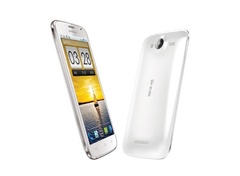 Intex Technologies has released its Intex Aqua I-5 Smartphone for the Indian customers. The new Smartphone runs on Android 4.2 and is powered by 1.2GHz quad-core processor. The Smartphone will be offered in two colors –white and black – and is available at a best buy price of Rs. 11,690 (€ 150) at a wide range of retailers across the country. Intex Aqua I-5 has a 5.0-inch qHD capacitive touch-screen. The device comes up with a 2000mAh battery which provides a talk time of up to five hours and about seven days of standby time. The dual-SIM functionality of the phone works on both GSM + GSM technologies, the company affirmed. The Smartphone has 4GB of internal storage which can be expanded up to 32GB through a microSD card and 1 GB RAM. It also features a 2-megapixel front camera and a 12-megapixel rear auto-focus camera with flash. The connectivity options include Wi-Fi, 3G, Bluetooth, A-GPS and micro USB. The device is also equipped with four sensors; Proximity Sensor, G sensor, Motion Sensor and Environment Light Sensor. Some other features of the handset are FM radio, Flip-mute, face screen unlock, voice screen unlock and pattern lock security. Intex Aqua I-5 is expected to make tough competition to the other quad-core device offerings in the sub-continental country that are in the range of Rs 16,000 such as Samsung Galaxy Grand Quattro, Zen Ultrafone 701 HD, Micromax A110Q Canvas 2 Plus and others. Intex, who has released a dozen mid-range Smartphones in the Aqua range, said it is planning to unveil 20 more handsets in the next quarter. The company aspires to sell more than 2 million Aqua handsets in the fiscal year of 2013-2014, which will raise its revenue by 300 percent. For more information on the world head to Mobile World Congress 2014 in Barcelona, taking place from 24-27 February, 2014. Contact EAS for best in quality accommodation, marketing and other special services for mobile world congress 2014.
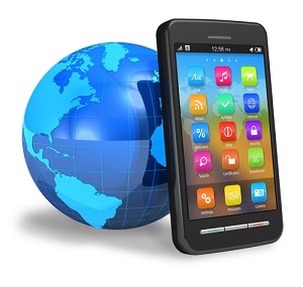 A recently published global survey conducted by Google and Ipsos MediaCT states that Israelis are the most fervent Smartphone users in the world. The survey, taken in the first quarter of 2013, was based on the responses of 1,000 global Smartphone users between the ages of 18 and 64. In 2012, the Smartphone penetration in the Israeli market stood at 35%, while so far this year it has gone up to 57%, witnessing a substantial 22% rise. Britain is the only country ahead of Israel, where 62% of the population own Smartphone. Spain came in third with 55% Smartphone users while France and Germany are ranked 4th and 5threspectively with 42% and 40% of their populations owning Smartphones. While Britain slightly edged Israel in terms of Smartphone ownership, but in terms of the device’s usage, the middle-eastern country surpassed all the European countries and America. According to the survey, the most extensive use of Smartphone in Israel takes place at home (87%), at work (77%) or while travelling home from work or during a walk (72%). The survey also revealed the details of Israelis’ Smartphone use habits. The country’s people make more use of searches (93%), applications (86%), maps (84%) and social network updates (82%) than people of any other country. Israelis are also ahead of all other nations in watching videos on the small screens, with 77% viewing the clips on YouTube and other video sharing websites and 48% watching the full length TV shows online. Israeli Smartphone users left the other nations behind them in every possible parameter. However, an area where they appeared more conservative than the other countries, is online shopping with only 31% saying they used their handsets to purchase items online, compared with 46% of Americans and 39% of Britons. For more information on the world of mobile head to the Mobile World Congress 2014 in Barcelona, taking place 24-27 February, 2014. Contact EAS for best in quality accommodation in Mobile world congress 2014, marketing and event management.
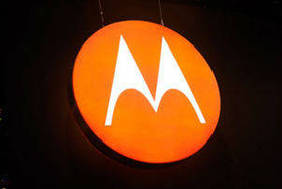 Cell phone manufacturer Motorola, in its bids to make a comeback in the hot-competitive mobile market, has announced it will launch its new flagship device – Moto X – later this year. Moto X, the first Smartphone ever assembled in United States, will be built at a 500,000 square-feet facility in Texas that will create about 2,000 jobs by this October. Motorola has already started hiring for the Fort Worth plant in Texas. The site was most recently vacant but it was once used by mobile phone giants Nokia. The factory will be owned and run by a Singapore-based contract electronics manufacturer – Flextronics International Ltd – which has a long time relationship with Motorola. Moto X will be designed, engineered and assembled in the U.S but all of its components won’t be made there. The likes of screen and processor will be manufactured overseas. Though the specifications of Moto X have not yet been disclosed by the company, it is rumored that its screen and display could be anywhere from 4.5-inches to 5-inches. The phone will use two processors to conserve battery life. While most of the current phones use Gorilla Glass 2 for screen protection, Moto X is expected to come up with an enhanced version – Gorilla Glass 3 – to ensure the maximum screen safety. The phone is said to be water-resistant as well. Motorola CEO Dennis Woodside said Moto X will have the feature of managing ultra-low power sensors; such as in gyroscopes and accelerometers, that can sense which components are currently not being used and shuts them down to conserve the power. In addition to the Moto X, Motorola, which was acquired by Google for $12.5 billion last August, will also launch several lower-end Smartphones this year. For more information on the world of mobile apps head to Mobile World Congress 2014 in Barcelona, scheduled to be held from 24-27 February, 2014. Contact EAS for best Mobile World Congress 2014 Hotels.
 The internet messaging has outnumbered SMS messaging for the first time in its 20-year history, the research firm Informa has found. Thanks to BlackBerry’s flagship messaging service – BlackBerry Messenger – the users of Apple and Google Smartphones can soon send messages over an internet connection free of cost and avoid the fees charged by the telephone carriers. Informa reports that the popularity of instant messages surpassed SMS messages for the first time last year and it is likely to be doubled by the end of 2013. The report states that 19 billion instant messages were sent in 2012 compared with 17.6 billion SMS messages. The firm predicted that the Smartphone users will send 41 billion instant messages this year and this figure will grow to 50 billion by the end of next year. On the other hand, the phone users will send only 21 billion in 2014. SMS service, which was first added to Nokia phones in 1993, remained the standard method for sending short text messages between the phones for two decades. However, in recent years it has met challenges from free instant message applications such as Apple IMessage and WhatsApp. The reason for increasing popularity of these instant messaging tools is that their potential is not limited to text trade between phones and they allow the users to send group messages and share videos and photos as well. Recently, BlackBerry has announced that it is planning to expand the BBM service to Android and iOS devices this summer, a move which may prove to eliminate SMS which has already seen significant decreases in use. The company said BBM service currently has over 60 million monthly active users and more than 10 billion instant messages are sent every day. For more information on the world of mobile apps head to Mobile World Congress in Barcelona, scheduled to be held from 24-27 February, 2014. Contact EAS for best in quality accommodation, superior service, marketing and event management. For further information, click here.
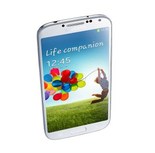 Samsung Electronics Galaxy S4 marked its introduction into the global market with a remarkable note as the company says they have sold more than 10 million units in less than a month. In just the first month, sales of the new Smartphone from Samsung, has surpassed all of its predecessors. The Galaxy S III had taken 50 days to reach the 10 million mark following its release last year. Galaxy S II reached the mark in five months while Galaxy S accomplished the milestone in seven months. Galaxy S4 is currently available in 115 countries and will be introduced to 155 countries in cooperation with 327 partners, said Korean electronics giants, who emerged as the leader of the Smartphone market last year by selling over 400 million phones. The Research firm IDC said that the massive success of Galaxy S4 will help Samsung to sustain its position in the Smartphone market. Android-powered Galaxy S4 has a 5-inch full HD Super AMOLED display and a dual camera function which allows the user to use both front and rear cameras simultaneously. Currently, S4 is only available in white and black color, or as Samsung likes to say White Mist and Black Forest. But soon it will be available in more colors including Brown Autumn, Blue Arctic, Purple Mirage and Red Aurora, announced Samsung. Apple’s iPhone 5 — the main rival of Galaxy S4 — sold about five million devices in the opening weekend of its launch, but the amount disappointed investors, who were expecting much higher sales. The market analysts had predicted nearly eight-million sales for Apple iPhone 5 on the first weekend. For more information on the world of mobile apps head to Mobile World Congress 2014 in Barcelona, scheduled to be held from 24-27 February, 2014. Contact EAS and Book your apartments for mobile world congress 2014.
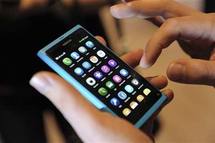 Smartphone apps help the users to save 88 minutes of their time in a day or as much as 22 days’ worth of free time per year, a latest study has found. The study was conducted by Harris Interactive on behalf of Click Software and was based on the responses of 2,120 U.S adult Smartphone users. The report states that 97% of Smartphone users access at least one application frequently on their handset every day. On average, a user saves 88 minutes of his/her time in a day by accessing the apps from their Smartphone and thereby saves 22 days of free time a year. According to a recent report published by BusinessNewsDaily, email apps are the most frequently used apps on the Smartphone, pursed by text and social networking applications. The other commonly used apps are games, maps, weather, calendar functions and GPS. Though email apps dominate the overall usage of Smartphone applications, people believe that they save more time using text apps than any other kind of applications. The text apps save 53 minutes a day compared with 35 minutes a day for email applications. The Smartphone users confessed that apart from personal use, they use their device for work as well. One in five users of GPS and email apps said they use these applications primarily for work, while one in three said they use the abovementioned apps for personal and office purposes equally. Researchers found that despite spending too much time on the Smartphones, the majority of the users don’t think that they are getting much out of them, because they are not able to utilize their devices properly. For more information on the world of mobile apps head to Mobile World Congress 2014 in Barcelona, scheduled to be held from 24-27 February, 2014. Contact EAS for best in high quality accommodation, marketing and event management. For further information, click here.
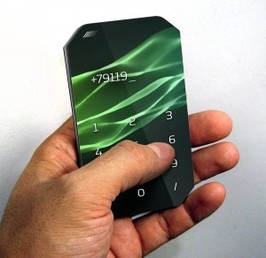 Your hand will be your Smartphone soon. It sounds like a dream, but the day is not far away because the researchers in Japan are reportedly developing a world-shattering technology which will allow you to keep your mobile phone on the palm of your hand. The Masatoshi Ishikawa and colleagues at the University of Tokyo, using a special camera that unites two rotational mirrors and high-speed vision, have discovered a way to project a display of the device on your palm, or any other surface, so one can remotely operate it at office or home. According to Ishikawa, with this technology, the users won’t need to carry a Smartphone or depend upon computer or a keyboard to use the phone and they will be able make a calls without anything. Ishikawa said the system will have the power to detect the movements of 3D objects every two milliseconds. A report presented by ABC news says the program tracks the moving object with the help of high-speed vision, allowing users to walk with the image of their mobile phone on their palm. The computer system beams ultrasonic wave emitters to create the reflection of the mobile phone on the palm and users have the sensation that the keyboard is pressing against their skin. Ishikawa, who has developed a series of systems using high-speed vision technology, said the palm phone will be become a reality in next two to three years. Ishikawa’s latest accomplishment was the launch of a high-speed robotic hand last year. For more information on the use of mobile internet worldwide head down to the GSMA Mobile World Congress 2014. For the best hotels, Serviced apartments for upcoming MWC14 in Barcelona and other accommodation choices contact EAS, your local travel agents. With our expert knowledge and experience we’ll make sure you have an unforgettable stay. And we’ll even organise your transportation and nightly entertainment too.
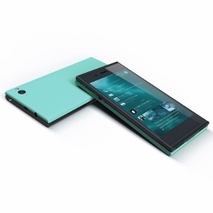 Jolla, a company founded by ex-Nokia employees, has displayed the first look of its maiden Smartphone, which has a custom operating system – Sailfish. The much-anticipated Jolla phone will be available for sale by the end of this year. Sailfish has been developed from remains of MeeGo, a project that Nokia had abandoned a couple of years ago to adopt Windows Phone for its handsets. The launch of Jolla phone came days after the appointment of company’s new CEO – Tomi Pienimäki – whose brother Sami was one of the founders of Jolla Company. Powered by a dual-core processor, Jolla phone has a 4.5 inch touch-screen display, 8 megapixel cameras and a replaceable battery. Its integrated storage is 16GB but using an SB card, it can be expanded. Jolla phone also supports 4G, and the applications developed for Android are compatible to it. There are no navigation keys in the device and the user interface is controlled just with swipes and gestures. In addition to the other classical features of a handset, another stunning feature of Jolla phone is that its coloured back is interchangeable and the interface changes depending on the type of cover you select. Several employees of Nokia’s team, which was working on a joint Nokia-IBM project to make a new mobile operating system – MeeGo – to counter Android and Apple’s iOS, had left Finnish phone maker in 2011 to make their own company and carry on development work on the MeeGo project. The pre-order Jolla phone is only available to buyers in United Kingdom, Germany, Denmark, Finland, Sweden, Spain, Italy and France, priced at €399 (£337). It is expected to be shipped by the fourth quarter of this year. For more information on the world of mobile apps head to Mobile World Congress in Barcelona, scheduled to be held from 24-27 February, 2014. Contact EAS for best in high quality accommodation, marketing and event management. For further information, click here.
|










 RSS Feed
RSS Feed